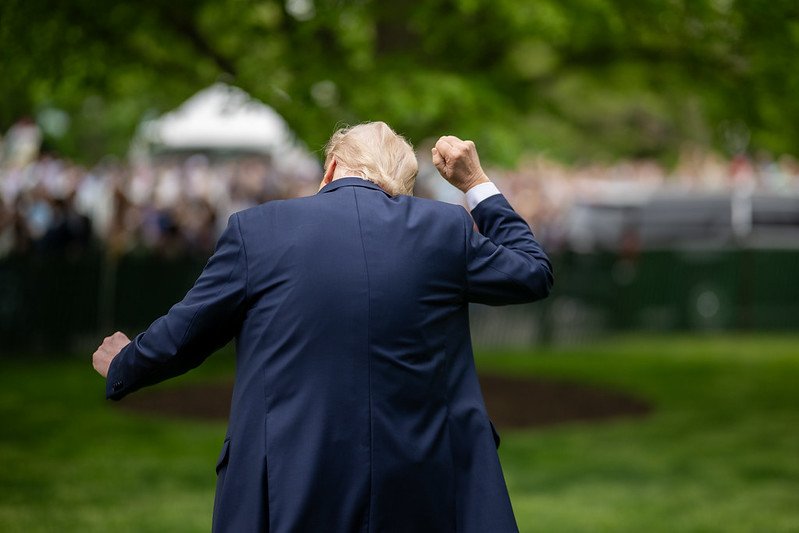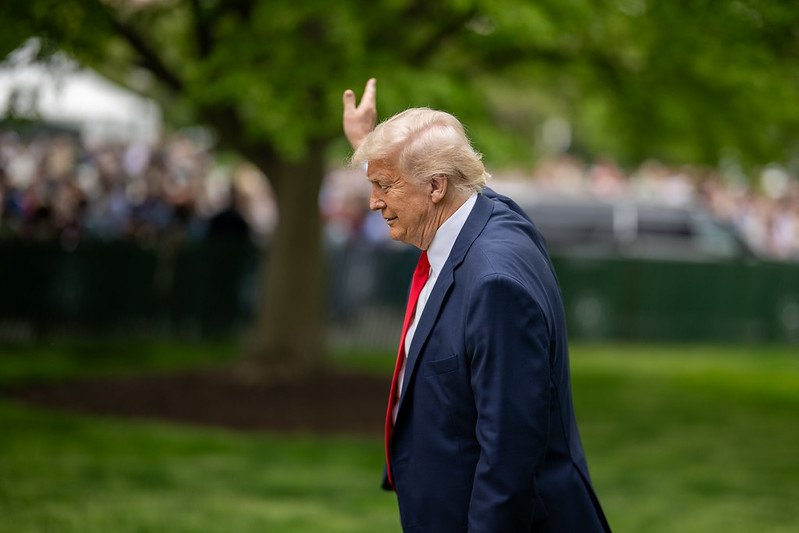The Moment of Truth for Trump’s Protectionist Policies Is Yet to Come
April’s US inflation data will offer the first glimpse of the real impact of the global trade war that the US administration launched on the “Liberation Day”. A commentary by Ignazio Angeloni

“Liberation Day”—Donald Trump’s announcement of sweeping tariffs on American imports—has already triggered damaging effects, despite subsequent backpedaling. The U.S. itself has borne the brunt, with sharp declines in equity markets, Treasury yields, and the dollar. Yet all this may be just the prelude to more serious consequences.
Thus far, attention has been insufficiently focused on the moment when the true impact of this new U.S. economic policy will begin to materialise. That “moment of truth” will unfold in two stages: the first in just a few days, the second a few weeks later.
We can pinpoint the first stage with certainty: May 13, when April’s U.S. inflation figures will be released. That month marks the first period during which the effect of tariffs on consumer prices could start to emerge.
The decline in March inflation—which Trump has been touting on social media while urging the Federal Reserve to cut rates—did not yet reflect those tariffs. April’s data, however partial, will be critical in showing whether the feared inflationary spike is truly underway.
The Wall Street Journal—typically a mouthpiece for big business and currently an outspoken critic of the administration—recently headlined, “We See Trump Everywhere, Except in the Data.”
Indeed, neither the anticipated slowdown nor the surge in inflation—long forecast by experts and reiterated this week by the IMF—has yet shown up. But that is not unusual. If expectations hold, the first real inflationary signals will surface in the May 13 release.
What might we see then? Economic dynamics can be unpredictable, though not always.
Those familiar with Italian economic history will recall the surprising absence of inflation following the lira’s devaluation in 1992, contrary to all forecasts. Different times, different circumstances, but still instructive.
What could happen now? Tariffs raise consumer prices under three conditions:
- Foreign exporters hold their prices steady.
- The dollar doesn’t appreciate to offset the tariffs.
- Importers and distributors do not absorb the costs by shrinking their profit margins.
We already know the second condition has materialised—the dollar has in fact dropped. The other two? Less certain.
This writer believes we will see a price impact, but the extent remains unclear in the short term. Adjustments to both foreign and domestic prices could be gradual.
The inflation figure is also politically charged, given the intensifying standoff between the administration and the Federal Reserve. If inflation remains subdued on May 13—or barely ticks up—the central bank’s position will grow more precarious. Pressure on Fed Chair Jay Powell will intensify.
Trump’s legal advisers are already preparing their offensive. The Fed’s institutional position in the U.S. is not especially robust; its independence is not guaranteed, nor is it clear how far the Supreme Court would go to shield Powell.
One certainty: a legal clash at this level would roil markets more severely than anything we’ve seen so far, with potentially systemic implications for global finance.
On the flip side, if inflation comes in hot, the Fed may be forced to hold or even hike interest rates—equally fraught in today’s economic climate. Either way, policymakers face a no-win scenario.
After the Pause
The second reckoning will arrive in less than three months, as the temporary suspension of so-called “reciprocal tariffs” nears its end. On April 10, when that suspension was hastily arranged, it’s doubtful that officials fully appreciated the timeline of U.S. trade negotiations.
According to figures from the Peterson Institute for International Economics, such talks last on average 18 months—from initiation to signing—ranging between 4 and 38 months. Even more time typically elapses before agreements take effect.
It is therefore entirely reasonable to expect that in three months, none of these reciprocal tariffs will have been renegotiated to the point of allowing deal signings. What happens then?
In the absence of new arrangements, the April 2 tariffs will automatically snap back into force, potentially reigniting the market upheaval that led to their initial suspension just eight days after announcement.
Alternatively, temporary extensions may be negotiated—only to deepen uncertainty further.
Across the board, and especially in the early months of this administration, one theme stands out: key policy choices, regardless of their substantive merit, have been made without sufficient preparation. Decision-making remains vulnerable to the impulses and mood swings of a mercurial president, flanked—exceptions aside—by advisors lacking the experience, independence, or judgment their roles demand.
That is reason enough for concern—and for expecting further, perhaps even greater, instability to come.
A version of this article originally appeared in Italian in Il Sole 24 Ore.

“It is reasonable to expect that within three months, none of the reciprocal tariffs will have been renegotiated to the point of enabling new trade deals. What happens then? Absent further developments, the April 2 tariffs will come back into force, paving the way for a new turmoil
IEP@BU does not express opinions of its own. The opinions expressed in this publication are those of the authors. Any errors or omissions are the responsibility of the authors.
